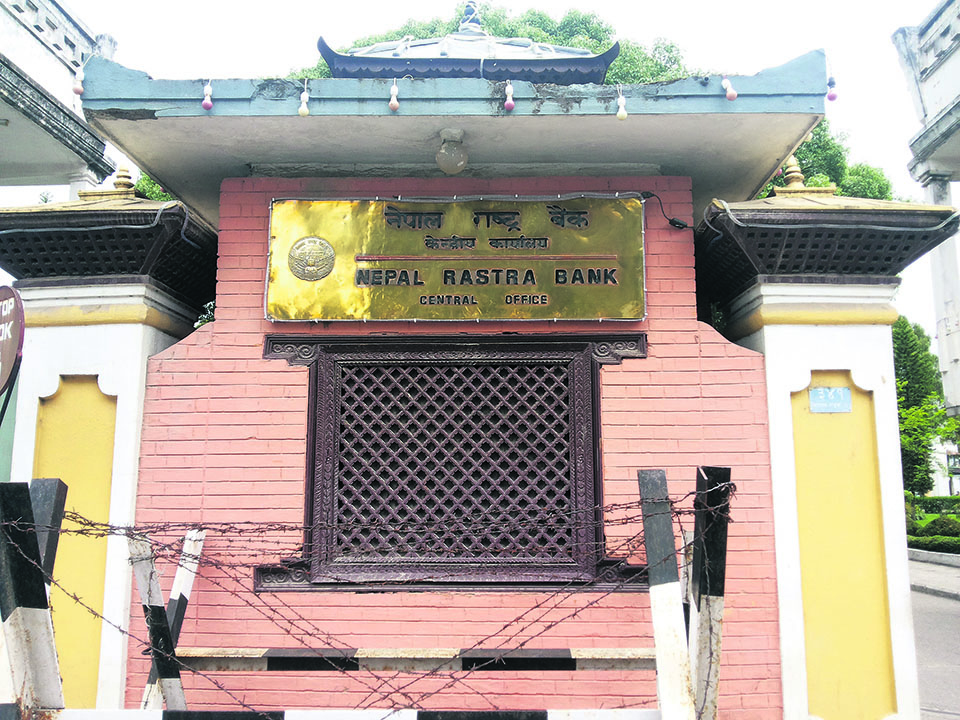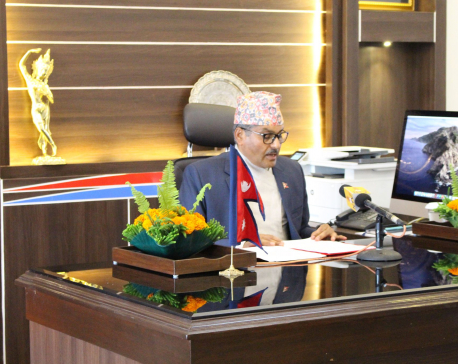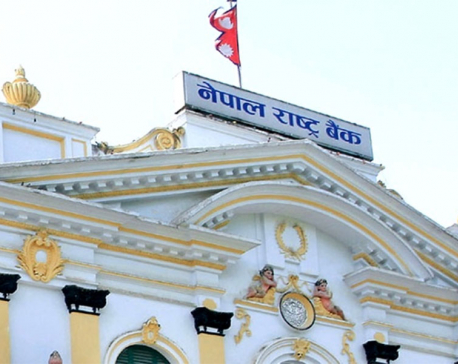
OR
Monetary Policy 2021/22 announces additional packages and liquidity management programs for recovery of pandemic-affected economy
Published On: August 15, 2021 07:00 AM NPT By: RAJESH KHANAL

KATHMANDU, August 15: Nepal Rastra Bank (NRB) on Friday unveiled the monetary policy 2021/22 amid ongoing criticism for delaying to issue one of the country’s important macroeconomic policies.
Giving continuity to its last year’s roadmap, NRB has mainly focused on providing respite to the COVID-19 affected businesses by easing their access to the country’s financial resources. Through the policy, NRB has announced refinancing, rescheduling and restructuring of loans and maintenance of liquidity by adopting flexibility in its monetary tools.
In order to relieve the coronavirus-affected small and medium enterprises (SMEs), the policy has asked the banks and financial institutions (BFIs) to take a maximum premium of two point percent in the base interest rate for a credit of up to Rs 10 million to be provided to such firms. The BFIs will have to continue providing at least 15 percent of their loans to these SMEs.
The targeted credit programs for tourism businesses, communications, transport, party palace, gym centers and movie theaters, among others, which are largely affected by the pandemic, will be effectively implemented, reads the monetary policy. It looks for maintaining the private sector credit at around 19 percent of the total loans.
The policy talks about effectively implementing the interest rate corridor for liquidity management. For this purpose, the threshold has been maintained at two to five percent. It has aimed to actively implement open market operations to enforce the interest rate corridor effectively.
The central bank has scrapped the credit to core-capital plus deposit (CCD) ratio rule and replaced it with the loan to deposit ratio for the BFIs. Under the CCD provision, the BFIs were required to maintain a CCD ratio of 85 percent, which meant that banking institutions could not extend more than 85 percent of the deposit and core capital as loans. Now, they have to maintain the loan to deposit ratio at 90 percent while issuing loans.
NRB has introduced a threshold on margin loans citing to minimize the risk in stocks trading. In the new provision, an investor can take a maximum credit of Rs 40 million from a single BFI. The limit for a person to take margin loans from the entire banking system is Rs 120 million at the maximum.
The central bank has kept the existing cash reserve ratio unchanged at three percent and bank rate at five percent. Similarly, the statutory liquidity ratio has been kept unchanged at 10 percent, 8 percent and 7 percent for commercial banks, development banks and finance companies, respectively.
Dipendra Bahadur Chhetri, a former NRB Governor, said it is a positive side that the monetary policy has given continuity to support the pandemic-affected SMEs. “However, the authorities need to show concern on effective implementation of the announced packages,” said Chhetri, criticizing last year’s monetary policy for its weak implementation.
You May Like This

Monetary policy cannot have all the tools to solve all economic problems: NRB Governor Adhikari
KATHMANDU, July 20: At a time when Finance Minister Dr. Prakash Sharan Mahat is publicly assuring that all the problems... Read More...

NRB releasing monetary policy for FY 2022/23 today
KATHMANDU, July 22: Nepal Rastra Bank (NRB) is unveiling its monetary policy for fiscal year 2022/23 on Friday. ... Read More...

VIDEO: NRB Governor unveiling monetary policy for fiscal year 2021/22
KATHMANDU, August 13: The Governor of Nepal Rastra Bank (NRB), Maha Prasad Adhikari is unveiling the monetary policy for the... Read More...




Just In
- Insurers stop settling insurance claims after they fail to get subsidies from government
- Nepal-Qatar Relations: Prioritize promoting interests of Nepali migrant workers
- Health ministry to conduct ‘search and vaccinate’ campaign on May 13
- Indian customs releases trucks carrying Nepali tea, halted across Kakarbhitta
- Silent period for by-election to begin from midnight
- SC issues short-term interim order to govt and TU not to take immediate action against TU legal advisor Khanal
- National consultation workshop advocates to scale up nutrition smart community in Nepal
- Patan High Court issues short-term interim order to halt selection process of NTB’s CEO













Leave A Comment